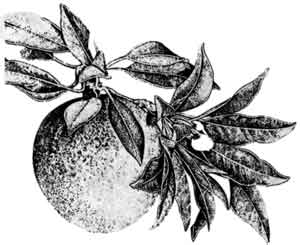From the Archives
of the Rare Fruit Council of Australia
by A. Oram

Sapodilla - a
Delicious Dehydrated Product
Scientific
names: Achras
sapote, Manilkara zapota
Family:
Sapotaceae
SAPODILLA or chiku (Manilkara
achras)
is grown the world over, mainly for tapping milky latex (chicle) which
is used largely as a base for manufacturing chewing gum. In India, it
is grown mainly for its fruit, which has very low acid and high sugar
content. It is, however, not yet used for processing on commercial
scale, though attempts were made to can it in syrup and also for
preparing jam. As it is a poor keeper (shelf life of 3 days) there are
gluts in the local markets, bringing down its price considerably. The
latex, on drying, produces black spots on the fruit skin, which also
adversely affect the price.
Therefore surplus as well as scarred
fruits need to be utilized for processing. Preparation of a dehydrated
product of sapodilla (sapota fig) was therefore tried. The product
obtained had appealing chocolate-brown colour, mild chiku flavour,
sweet taste and appearance of dried figs.
Harvesting
and Ripening of Fruits
Though
the tree flowers throughout the year, there are 2 major harvesting
periods (January-March and August-October). When the fruits develop
good colour on their surface and are still firm, they are harvested.
Such fruits, on scratching with finger nail, give a yellow streak
compared with green in the case of immature fruits. Mature fruits ripen
within 4-5 days at room temperature (25-30°C). During the ripening
process, the milky latex completely disappears and the fruit becomes
soft and sweet.

Sketch of Sapodilla fruit and leaves
Sapodilla
illustration by Jenny Taranto out of Glen Tankard's book - Exotic Tree
Fruits
Preparation
of Dehydrated Product
Wash
the fully ripe fruits, peel and cut them into halves (on the 'equator')
with a stainless steel knife. Remove the seeds and dry the deseeded
halves in an electric dryer, maintaining initially a temperature of
70°C and finally of 55°C. It takes about 4 days to complete the
drying when the oven is operated only for 8 hours a day (during office
hours). The yield of dried product is about 30%.
The dried
halves are then cut into slices (rings) and made into a garland, using
a twine cord. The product is finally packed in 400-gauge polyethylene
bags, which are sealed by heat and then stored at a low temperature
(5°C). The quality of the product thus packed and stored may be
retained even up to one year. However, under ambient storage condition
(25-35°C temperature and 65-85% relative humidity) storage pests
are a problem. The quality also deteriorates very fast, making the
product unacceptable within six months.
Back to
Sapodilla Page
|
|

